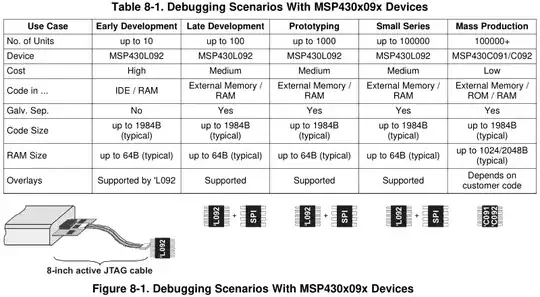While looking for some detailing on part number construction for Texas Instruments's MSP430 series, I came across this wiki page: TI MSP430
There is a statement,
"L" as in the MSP430L09x series, which indicates a RAM-only part; it must remain continuously powered to retain its programming
While I haven't able to validate the above after going through the datasheet on the official website, the question that bumps me is, if at all there is one such part, what could be the appropriate application to use it?
